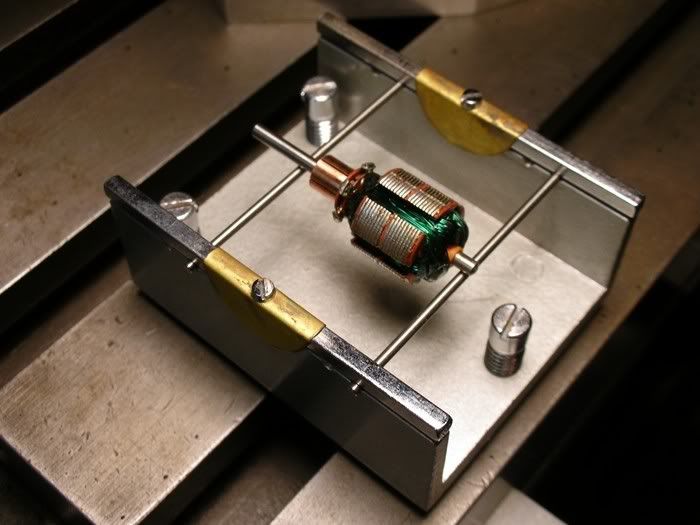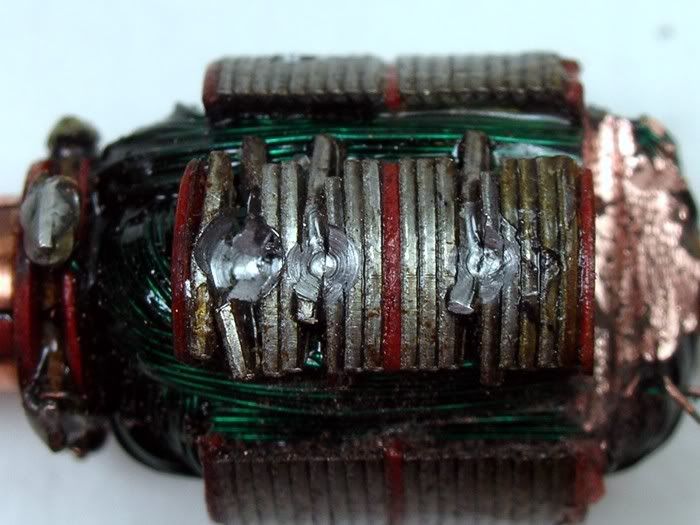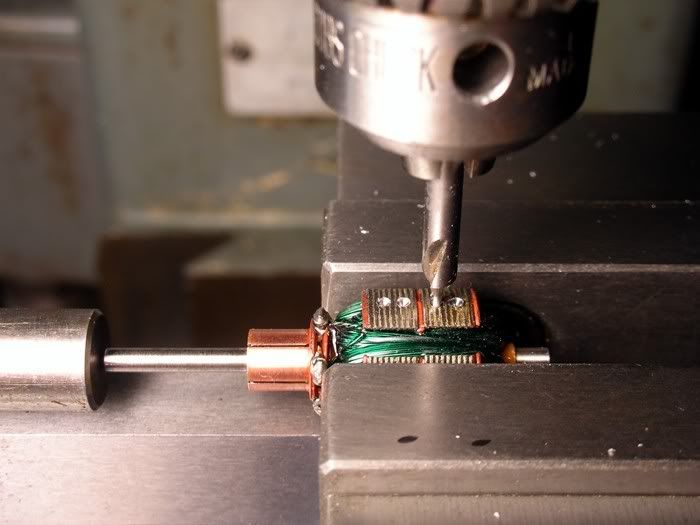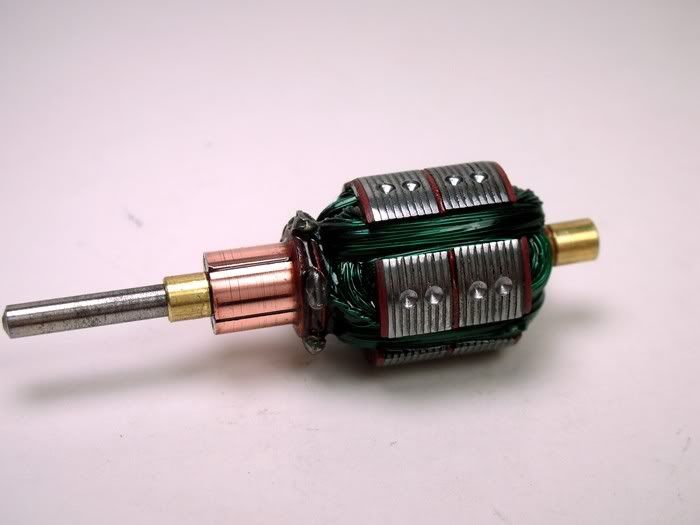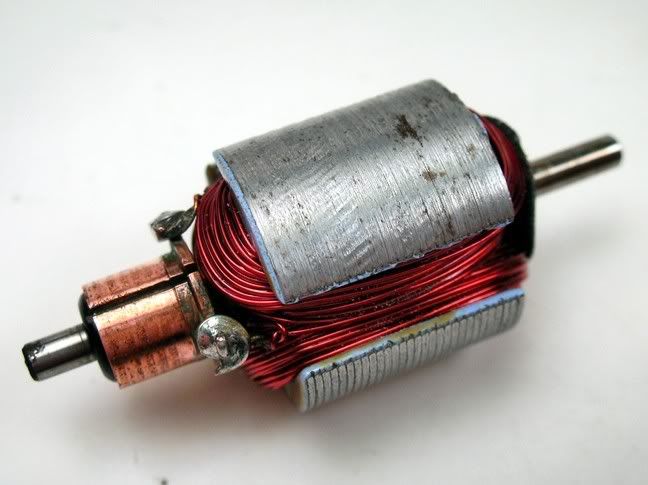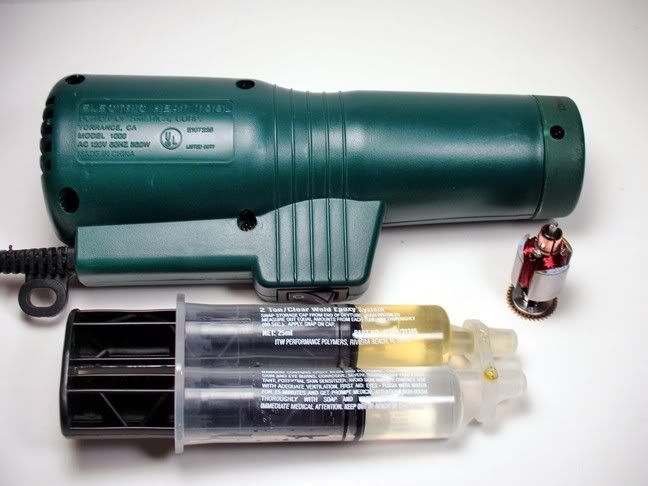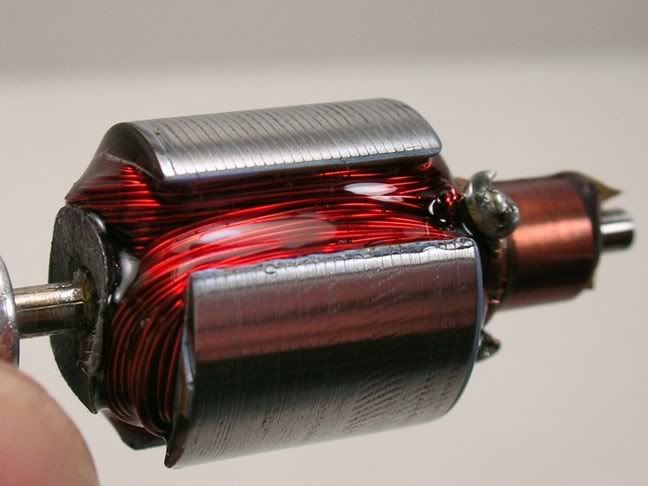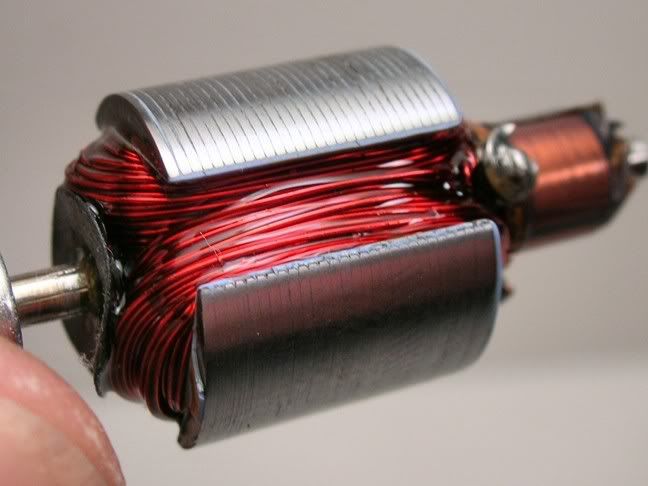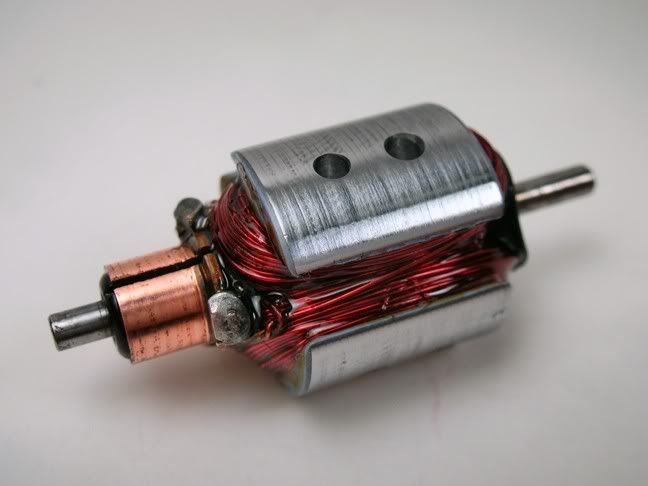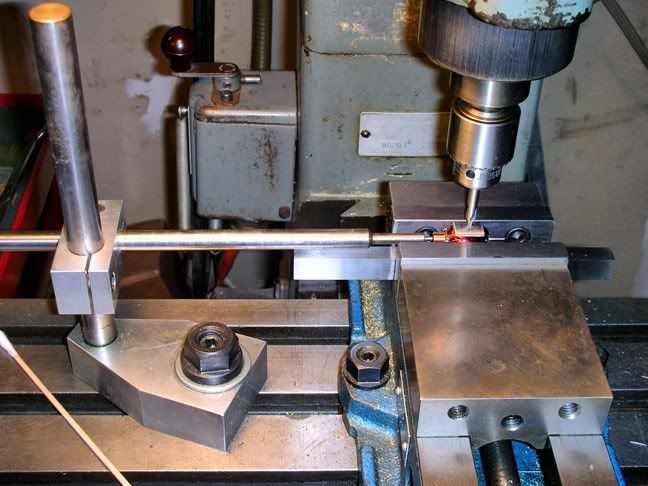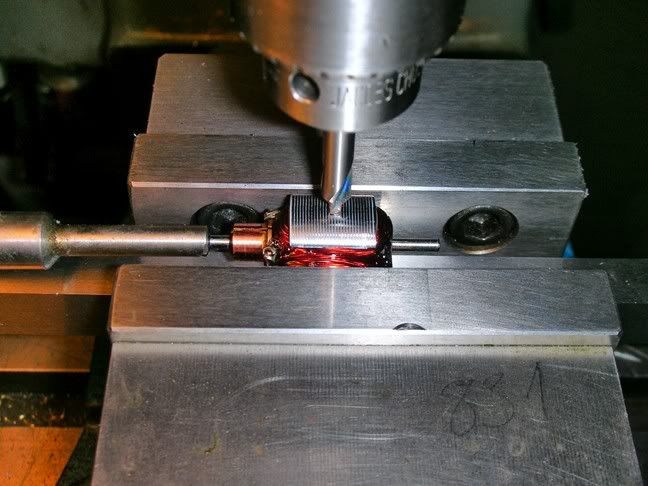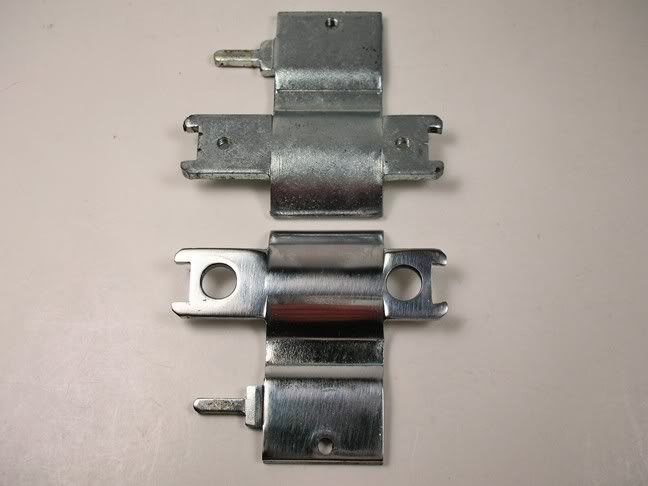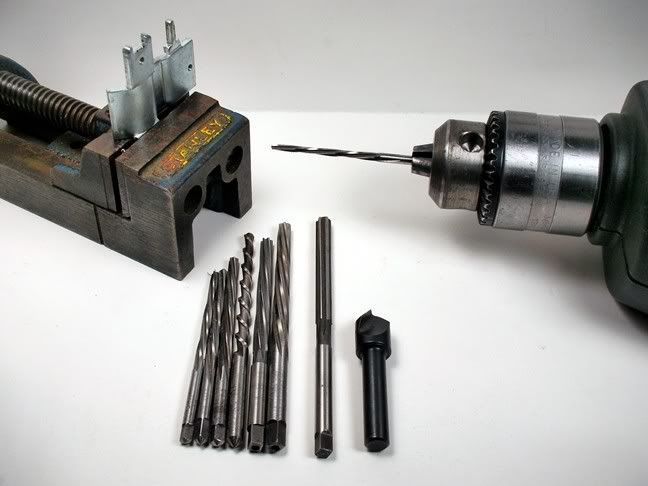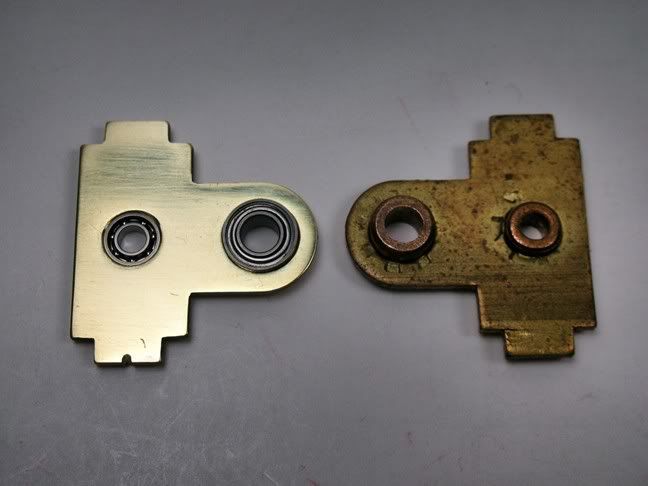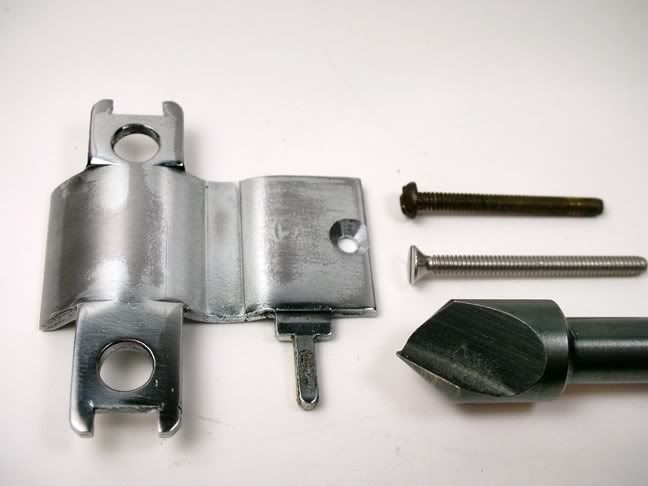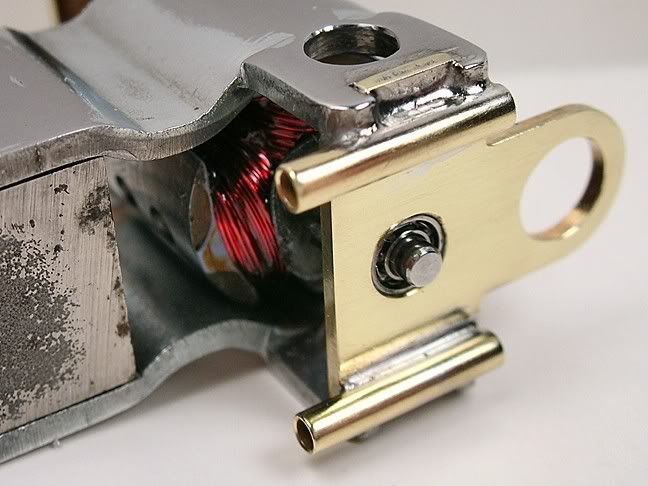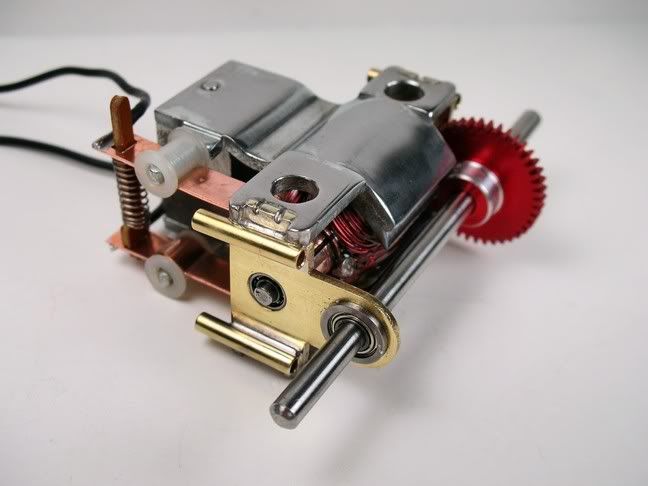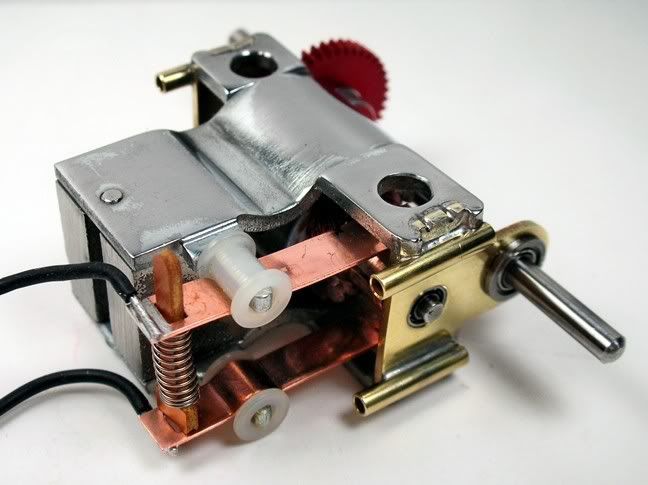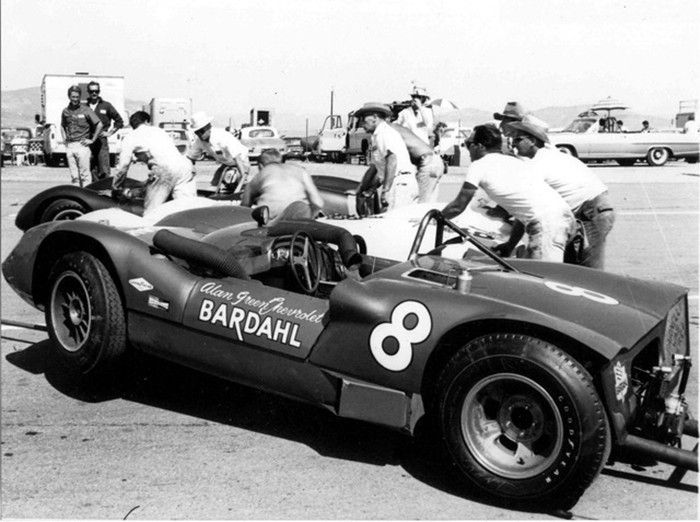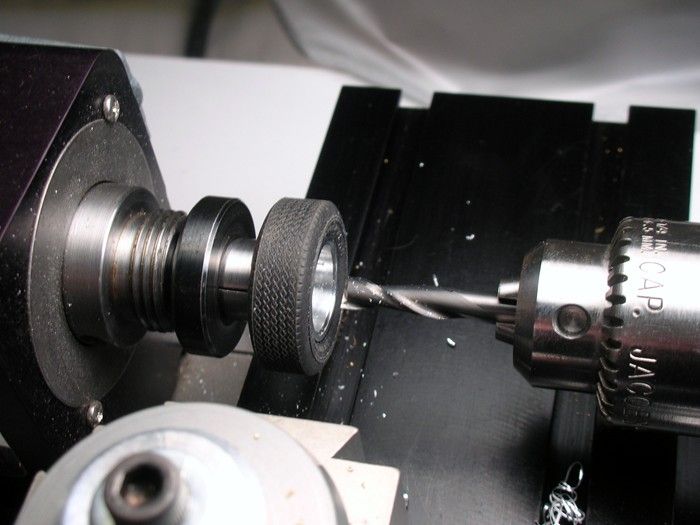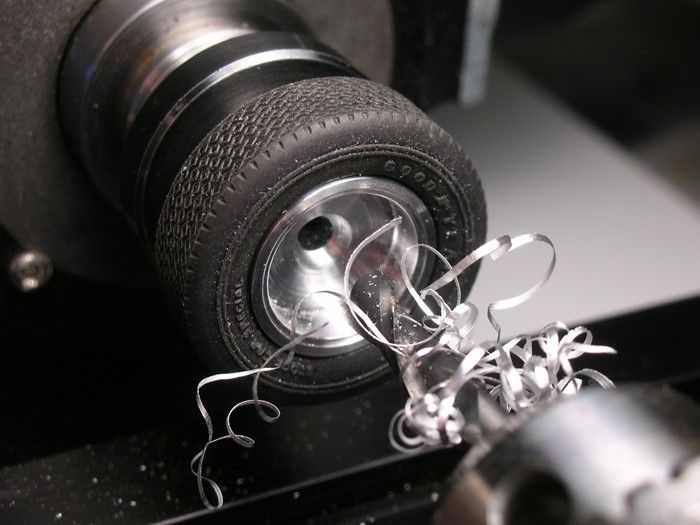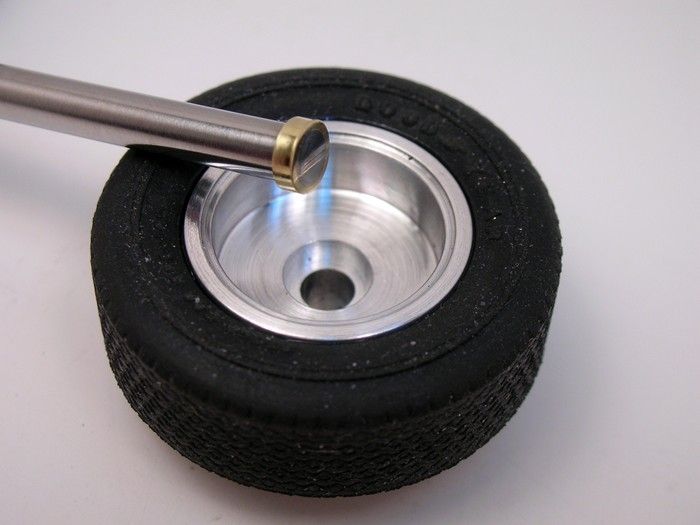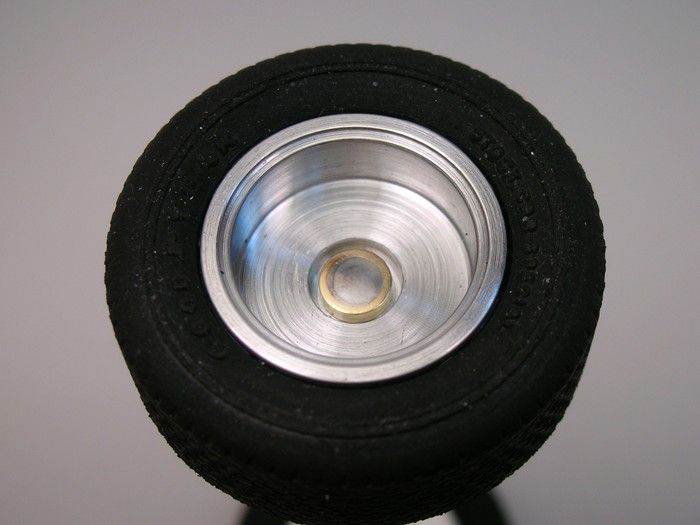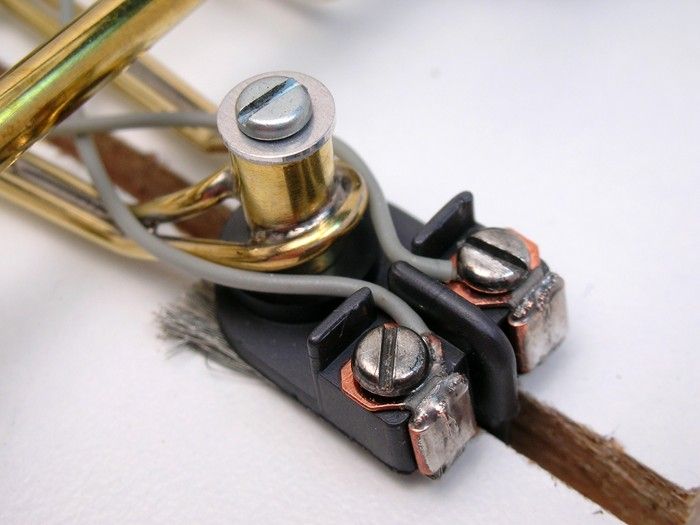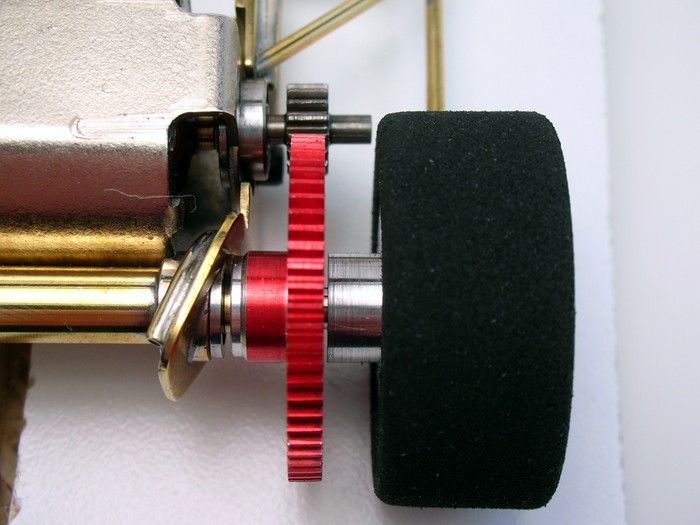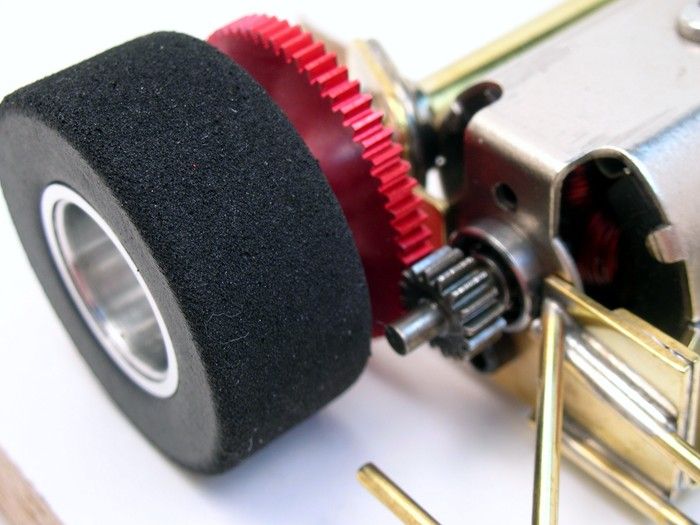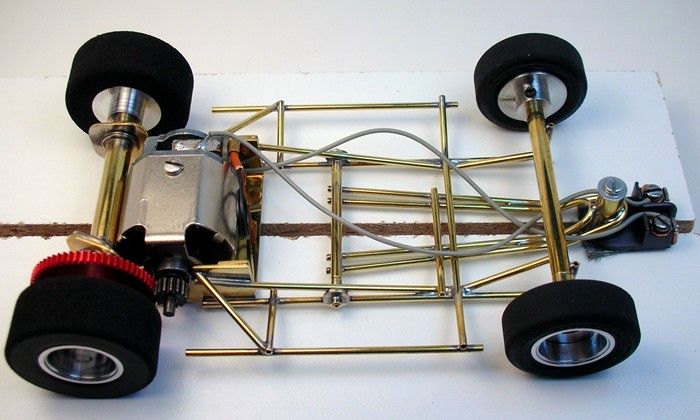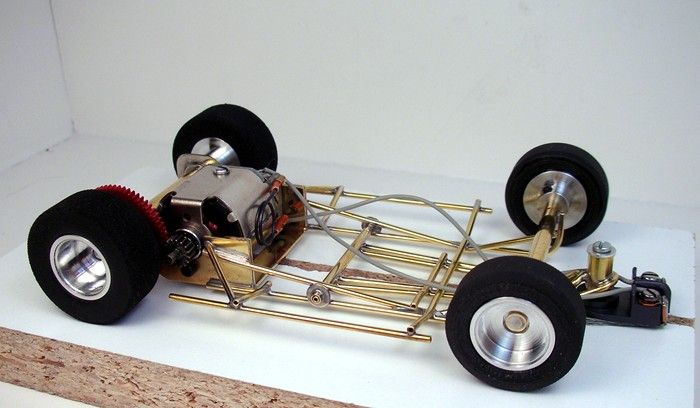Here is some info on drill balancing:
OK, it was time to balance the armature. Now I can share my mistakes with everyone. I don't know what I'm doing but I'm having fun trying. I'm sad that I destroyed an irreplaceable vintage armature. I wish I hadn't... I didn't mean to... in hindsight it seems obvious why I did... but now you won't... so build one of these

.
Here's the sad story. I examined the armature and it looked like it had been factory epoxied. First mistake. So I preceded to static balance it. I used my vintage Tradeship balancer:
When I touched the drill down YIKES!
The armature laminations shifted and the arm was toast. Whatever the factory coated the windings with it was not encapsulated with epoxy (mistake number one). See the attempted balancing hole on the far right. I'll get to the other carnage in a minute:
Well, that didn't work. Time to really epoxy the armature. I used Devcon 2 Ton Epoxy to coat the windings. I mean I piled it on

. I held the armature shaft in a pin vise to help control it in the process. I used a small heat gun to heat the epoxy. This get is thin at it really flows and gets sucked down into the windings. I remember Ron talking about using a vacuum chamber to cause this to happen and that's the best way. But man, I mean I really gooped tons of epoxy on and when I heated it with the heat gun it just sucked down and disappeared! REALLY!
OK, another mistake I've made. I went crazy with the heat gun on my Fly Weight GP Car project. If a little heat is good, a lot of heat must be better... wrong. I heated that arm until the sucker started smoking

. Mistake... that changed the properties of the epoxy and the first time I ran the car the epoxy got soft and came flying off and locked up the motor. Moral of the story, just get the epoxy hot enough to flow. Hold the arm comm up and let any excess flow off the back. If you get excess flowing off just spin the arm against your finger to wipe any excess away and your good to go.
I epoxied the destroyed arm and another new one. I decided to practice drilling on the destroyed one (the two holes on the left side of the arm in the picture above). I use the same drill I've been using on Mabuchi three-pole arms. Another mistake

. It was to big in diameter for the thin five-pole armature. Check out the thin web on the five-pole arm:
Time to use small holes:
Success. Look at how deep I got away with on that hole. You can see it just starting to break through at the 12 o'clock.
The moral of my newbie story is to epoxy the arm and drill small diameter, shallow holes into this five-pole arm. Hindsight is indeed 20-20. Here's the success story:
Onward...






